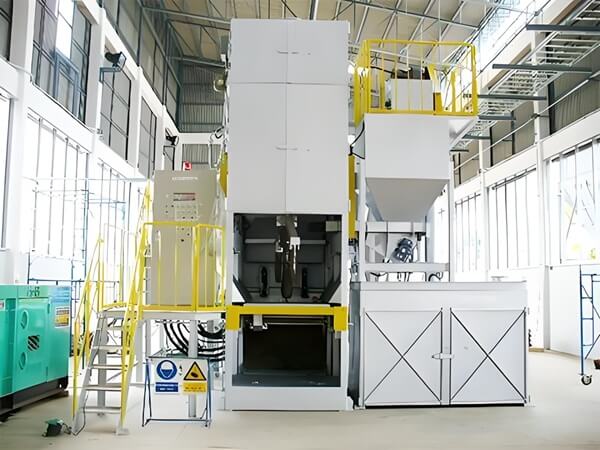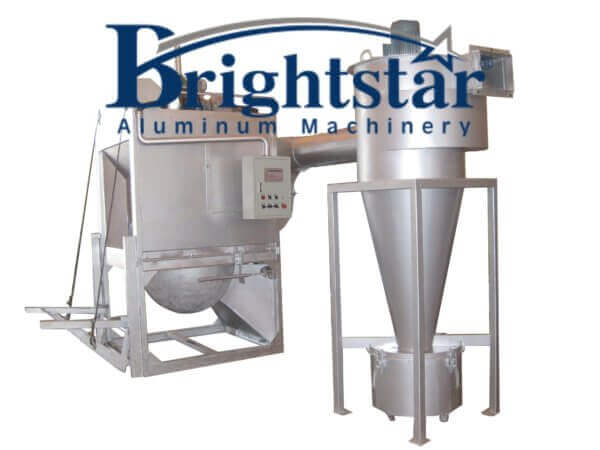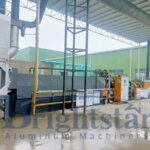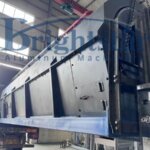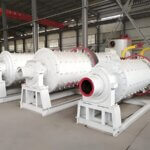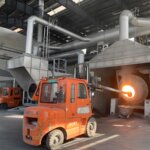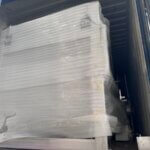Aluminum Dross Recovery Machine: Essential for Smelters
Aluminum Dross Recovery Machine: Essential for Smelters
The modern aluminum industry is driven by efficiency, sustainability, and cost-effectiveness.
At the heart of these objectives lies the aluminum dross recovery machine.
This equipment has become an indispensable tool for smelters around the world, helping them recover valuable aluminum from waste and reduce environmental impact.
But what exactly makes it so essential? In this detailed guide, we’ll explore the significance of aluminum dross recovery machines, their benefits, how they work, and why every smelter should consider investing in one.
What is Aluminum Dross?
Before delving into the recovery machines, it’s essential to understand what aluminum dross is.
Dross is the scum or waste material that forms on the surface of molten aluminum during smelting.
It consists of aluminum oxide, aluminum metal, and various impurities.
While it may seem like a byproduct of little value, dross actually contains a significant amount of recoverable aluminum, making it a valuable resource when processed correctly.
The Role of Aluminum Dross Recovery Machines
The aluminum dross recovery machine is specifically designed to process dross and extract the remaining aluminum, thus minimizing wastage.
Without this equipment, smelters would lose a substantial amount of metal during the production process.
Additionally, managing dross without recovery leads to higher disposal costs and environmental concerns.
Therefore, these machines are not just an optional addition—they are essential for optimizing metal recovery and ensuring sustainable production.
Why Aluminum Dross Recovery Machine is Important for Smelters
Smelters face numerous challenges in maintaining profitability and environmental compliance.
Here’s why the aluminum dross recovery machine is a crucial solution:
1. Maximizing Metal Recovery:
Dross can contain up to 80% of aluminum, and manual recovery methods can’t efficiently extract it. These machines ensure that nearly all recoverable aluminum is processed, significantly reducing wastage.
2. Cost Savings:
By recovering aluminum from dross, smelters can reduce the need to purchase new raw material. This not only saves costs but also lowers the overall production expenses. Additionally, it minimizes the need for waste disposal, which can be costly and complex.
3. Environmental Responsibility:
With increasing environmental regulations, smelters are required to manage their waste responsibly. By utilizing aluminum dross processing equipment, smelters can mitigate their environmental footprint by reducing the volume of waste sent to landfills.
4. Operational Efficiency:
Modern aluminum dross recovery machines are designed to streamline operations, automate processes, and increase overall efficiency. This allows smelters to focus on core production without being bogged down by the complexities of dross management.
How Does an Aluminum Dross Recovery Machine Work?
The working principle behind the aluminum dross recovery machine is straightforward yet sophisticated.
Here’s a step-by-step explanation of how it operates:
1. Loading the Dross: The dross, which is collected during smelting, is fed into the machine. This is usually done automatically, reducing the need for manual labor.
2. Separation Process: The machine uses mechanical and thermal processes to separate the aluminum from the oxides and impurities. Through a combination of high-speed rotation, heating, and fluxes, the aluminum is effectively separated and collected.
3. Extraction of Pure Aluminum: Once the separation is complete, the machine recovers pure aluminum, which can then be reintroduced into the production line, such as melting furnace, or casting into ingot. This not only saves costs but also ensures that the aluminum is used efficiently.
4. Disposal of Residuals: The remaining oxides and impurities are then processed for safe disposal or potential use in other industries, such as cement production.
How to Operate Aluminum Dross Machine Efficiently
Operating an aluminum dross recovery machine requires a thorough understanding of its functions and processes.
Here are some critical aspects to consider:
Pre-Operation Checks: Before starting, ensure that the machine is properly calibrated, and all safety checks are in place. This includes inspecting the components for wear and tear, verifying fluid levels, and ensuring that the settings are suitable for the type of dross being processed.
Optimizing Parameters: The efficiency of the machine can be greatly influenced by the parameters set for processing, such as rotation speed, temperature, and flux composition. Adjusting these factors based on the type and volume of dross can maximize recovery rates.
Maintenance and Cleaning: Regular maintenance is essential to keep the machine running smoothly. Periodic cleaning of the machine’s components ensures that there is no build-up of residues, which can affect the quality of the aluminum recovered.
Training for Operators: Proper training is crucial for operators to understand how to operate aluminum dross machines This not only ensures safety but also maximizes the performance and lifespan of the equipment.
How Much Does an Aluminum Dross Machine Cost?
One of the common questions smelters have when considering an aluminum dross recovery machine is, “How much does an aluminum dross machine cost?”
The price can vary significantly based on factors such as capacity, features, brand, and technology used.
Generally, a basic recovery machine can cost anywhere from $6,000 to $50,000, while more advanced models of integrated aluminum dross processing system with higher capacities and sophisticated features may range between $100,000 and $200,000.
While this may seem like a substantial investment, the cost savings and increased metal recovery over time can offset the initial expenditure, making it a worthwhile investment.
Benefits of Aluminum Dross Processing Equipment
Aluminum dross processing equipment offers several benefits that make it essential for smelters:
⭐Cost Efficiency: By recovering aluminum from dross, smelters reduce the need to buy new raw material, lowering overall production costs.
⭐Enhanced Productivity: Automated machines enable faster processing of dross, which means smelters can handle larger volumes without delay.
⭐Quality Assurance: The process ensures that the aluminum recovered is of high quality, free from impurities, and ready to be reused in production.
⭐Environmental Protection: These machines reduce the amount of waste that needs to be disposed of, making the production process more environmentally friendly.
Key Considerations When Choosing an Aluminum Dross Recovery Machine
When selecting an aluminum dross recovery machine, there are several factors to consider:
1. Capacity: Choose a machine that can handle the volume of dross your smelting operation produces. Overloading can lead to inefficiencies and equipment damage.
2. Technology: Look for machines that use advanced technologies, such as automated systems and improved thermal processing, to ensure maximum recovery and efficiency.
3. Energy Consumption: Energy costs can add up quickly, so consider machines that are energy-efficient. Modern equipment often comes with features that minimize power usage without compromising performance.
4. Maintenance Requirements: Regular maintenance is necessary, but machines that require constant attention may disrupt production. Choose equipment that is durable and easy to maintain.
Future Trends in Aluminum Dross Recovery
The future of aluminum dross recovery machines is poised for technological advancements.
With increasing pressure to be more sustainable, manufacturers are developing machines that are more energy-efficient and capable of recovering higher percentages of aluminum.
Additionally, there is a growing focus on automation, which will allow for more precise control over the recovery process and further reduce labor costs.
Conclusion
The aluminum dross recovery machine has become a cornerstone in the smelting industry, allowing businesses to recover valuable aluminum from what would otherwise be waste.
This not only enhances profitability but also promotes sustainability, which is critical in today’s environmentally-conscious world.
Understanding how to operate aluminum dross machines and selecting the right equipment can transform the way smelters manage their resources, ensuring that no aluminum goes to waste.
In essence, investing in quality aluminum dross processing equipment is not just a cost-saving measure—it’s a strategic move towards efficient, sustainable, and profitable aluminum production.
For smelters looking to stay ahead, adopting these machines is no longer an option; it’s a necessity.

